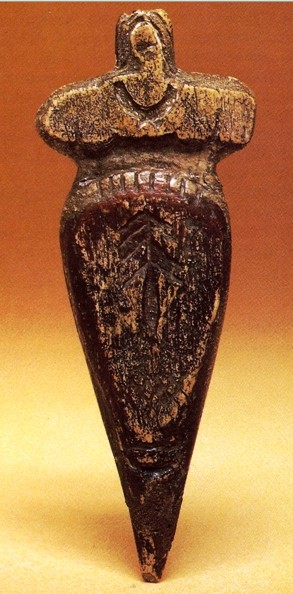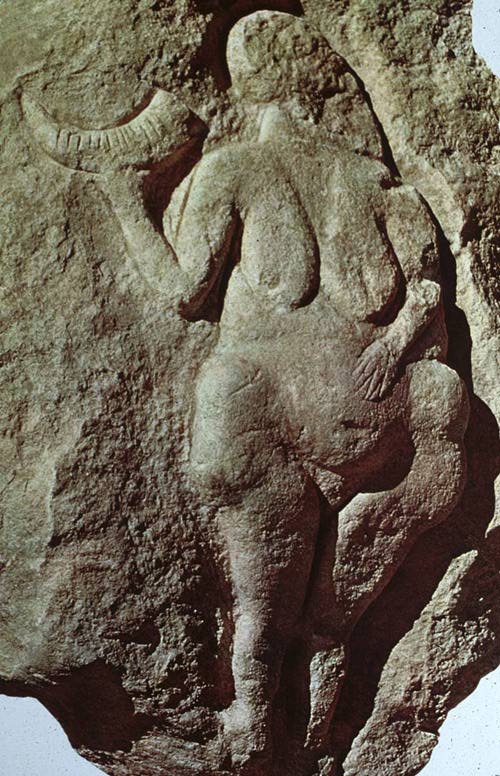

Riparo Gaban Planting Woman Bag
![]()
The planting mother was found at the Riparo Gaban shelter in Trento, Italy. She was carved on all sides from Red deer bone, a species known to be common at that time. Some archaeologist refer to her as the Gaban Venus. She is partially covered in red ochre, a common symbol of fertility in mother cultures. She wears a crescent necklace and the band above her waist has score marks on it, possibly 13 if you account for the wear on the sides and the partial marks there.

The lunar crescent and 13 were symbols of the lunar calendar which consists of 13 first light of the new moons. This is also depicted on the mother image from Laussel, France (called the Venus of Laussel), where she is holding a lunar crescent shaped horn with 13 score marks in one hand, while the other holds a pregnant abdomen.

On the Riparo Gaban planting mother, you see a seed and plant on her abdomen, above a crosshatch triangular field. The triangle is a common symbol of the womans pubic region, fertility. Often these triangles are marked or crosshatched to indicate a field that has been planted. She is 6.1 cm (2.4 inches) tall and dates from 5000-4000 BCE.
All the symbols indicate planting, fertility and a tie with the lunar calendar, which was used by early agriculturist and in some cases is still used by the wise. In Lunar planting when the moon is Waxing, you plant above ground food, plants respond to the growth, sap flows on above ground plants. When the moon is Waning, you plant below ground foods (root crops) because cellular water levels retreat to roots. This is also the time to transplant plants, so that the growth goes to the roots, helping them to be established. The gravitational forces between sun, moon and earth come into play in lunar planting methods, which ancient accounts mention in numerous cultures.
In Val Camonica (Camonica Valley), which incorporates Trento, there are more than 300,000 prehistoric figures carved on rocks. In the Neolithic period, anthropomorphic (human shaped) figures dominate, mainly women, while in succeeding epochs, masculine figures are quantitatively more numerous to feminine figures. These male figure generally deal with war, weapons and wagons, where earlier images deal more with agriculture, nature and community. The Deer was a common animal depicted at Val Camonica. The Red deer on the Planting Mother bag is from the Val Camonica petroglyphs.
